Shoulder Workout Gym
Some people argue that weight training is needlessly complicated. They follow the "just do it" method of lifting, choosing exercises without much thought. As long as the weight can be moved, their thinking goes, it's all good.
I'd argue instead that bodybuilding is at least partly cerebral. You've got to have some brains to go with all that brawn because we've all seen people who spend years in the gym—and their efforts never seem to go anywhere.
How do you make the most of your efforts on shoulder day? Start with these 16 important laws that'll kick-start strength and muscle gains while minimizing your risk of being sidelined with an injury. You'll discover that lifting does in fact require you to have your head in the game—but you still have to lift the weight.
1. Start With An Overhead Press
The time-tested approach when training body parts is to start with multijoint moves first in your workout when your energy levels are highest. Also called compound exercises, multijoint moves engage the greatest degree of muscle mass because two or more sets of joints are working simultaneously. Overhead presses are the most common shoulder multijoint exercise, engaging all three delts heads as well as the triceps and other assisting muscle groups.
Not only is choosing the right move crucial but so is the weight: Go heavy with a resistance that causes muscle failure at about 6-8 reps. This is the lower end of the hypertrophy rep range, which goes as high as 12 reps.
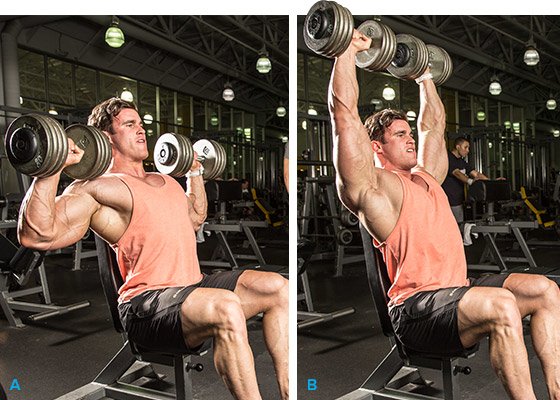
Seated Dumbbell Shoulder Press
2. Do Presses Seated And Standing
While the pressing motion is the same whether you're seated or standing, there's an important distinction between the two types of moves. When standing, you're better able to generate a bit of thrust through your hips and knees. This kind of movement called a standing military press, typically allows you to use more weight, or do more reps, than sitting allows.
Seated presses are considered slightly better for isolating the target musculature because it's far more difficult to generate momentum through your lower body. But you'll sacrifice some weight, some reps, or both as a result.
The bottom line, each type of movement has a place in a well-designed shoulder workout. Just don't fall in love with one type or the other; you want the benefits of each.
3. Favor Free-Weight Presses Over Machine Presses Early
Free-weight overhead presses—those with dumbbells or a barbell—are more difficult to control than machine-based overhead pressing movements. That increases stabilizer activity at the expense (albeit slight) of weight, reps, or both. But that's an important distinction. You want to do harder exercises early in your workout, before fatigue sets in. In that sense, doing your overhead presses with free weights early in your workout is the best way to start. Save the machine version for later, when fatigue makes balancing weights over your head difficult, so you can focus all your effort on pushing, not balancing, the weight.
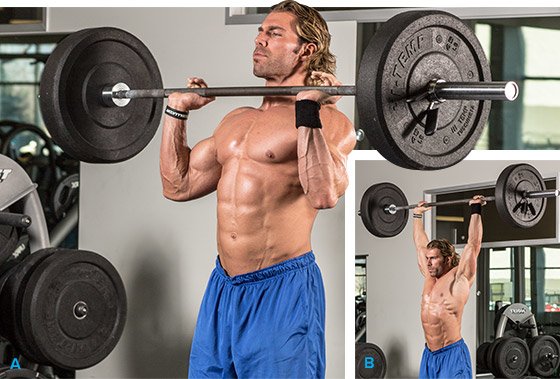
Standing Military Press
4. Watch Out For Very Heavy Behind-The-Neck Presses
It's tempting to train heavy, doing a few low-rep sets with very heavyweight occasionally when training delts, as you would on bench-press day or squats when you feel strong. But going behind the head could be a mistake when you're loading extra plates on the bar with shoulders. At the bottom position of the shoulder press with the barbell behind your head, the shoulder muscles are in their weakest anatomical position, and going heavy significantly increases the risk of a tear, says amateur bodybuilder and sports-medicine doctor Guillermo Escalante, DSc, ATC, CSCS, who is also an assistant professor of kinesiology at Cal State San Bernardino.
Instead, go in front of the head when doing very heavy presses, he recommends. When using more moderate weights, Escalante green-lights the behind-the-neck shoulder press.
5. Upright Rows: Another Multijoint Delt Movement
Overhead presses aren't the only kind of multijoint movement for the shoulders; upright rows are in that category too. So long as you take a moderate-width grip on the bar, your upper arms go directly out to your sides, making this a good middle-delt exercise. As with lateral raises, there's a bit of shrugging that goes on when you do an upright row, so the upper traps get worked as well. Upright rows can be done after overhead presses or later in your workout as burnout.
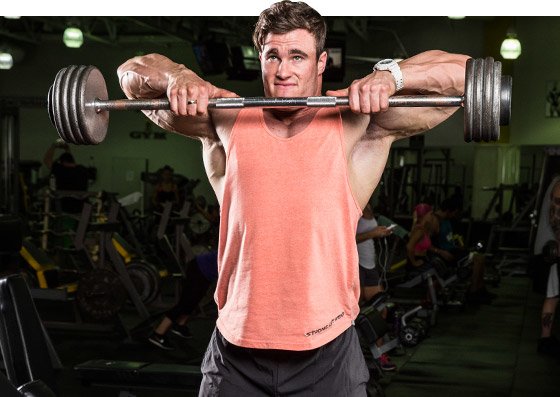
Upright Row
6. Do Isolation Exercises After Your Heavy Presses
Single-joint exercises eliminate assisting muscle groups, so here's where you can do a move to focus on each of the three delt heads. To target a single head, you must train in the particular plane in which the delt is working most actively, targeting the front, middle, and rear delts. That's done by locking a very slight bend in your elbows. The degree of bend in your elbows cannot change during the movement—it must be locked in one position for the duration of the set.
With single-joint moves, train toward the upper end of the muscle-building rep range, namely choosing a weight in which you can do 10-12 reps per set, perhaps as low as 8. These aren't the types of exercises in which you should do very heavy weights for low reps, because of the pressure this can put on the elbow joints. With single-joint moves, you're thoroughly working the delt heads in an effort to completely fatigue them and deliver a significant muscle pump.
7. Do Front Raises For The Anterior Head
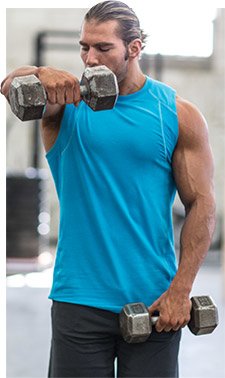
When you raise your extended arms directly in front of your body, you focus on the anterior delts, also called the front delt. This can be done standing or seated, and can be done with one arm at a time or both.
You can also use a variety of equipment, including a barbell, dumbbells, cables, or a machine. The front delts also work in multijoint overhead presses for shoulders (and presses for chest, especially incline movements).
As a single-joint exercise, it should be done after your multijoint movements.
8. Do Lateral Raises For The Middle Head
The single-joint movement in which you raise your extended arms directly out to your sides targets the middle delts. Notice I didn't say lateral delts or medial delts—two nonexistent muscles that are commonly confused with the middle delt. The movement, however, is done in the lateral (side) plane, which is why these exercises are called lateral-raise movements. Sure it's semantics, but it helps ensure that you sound like you know what you're talking about.
Like front raises, lateral raises can be done seated or standing, one arm at a time or bilaterally. Typically it's best done with dumbbells, cables, or a machine, though we've seen some bodybuilders attempt to do one-arm barbell lateral raises, which is a more limiting version of the move.
Your upper arm extends directly out to your side as you do it, which is the same motion it undergoes when doing behind-the-neck overhead presses. Both of these movements, therefore, strong focus on the middle delts.
9. Do Bent-Over Raises For The Posterior Head
When you bend over and bring your extended arms from a position down below your body out to your sides, you hit the rear delts. This motion is fairly similar—but not exactly the same as—multijoint rowing exercises that hit, among other muscles, the rear delts. Whether you're doing the movement standing (in the bent-over position), seated, or even on a machine facing forward, the movement pattern is the same. One benefit when doing the reverse pec-deck machine is that it locks your arms in a slightly bent position for the duration of the set. On the other end of the spectrum, withstanding reverse cable flyes, it's easy to extend at the elbows, turning a rear-delt exercise into one for triceps.
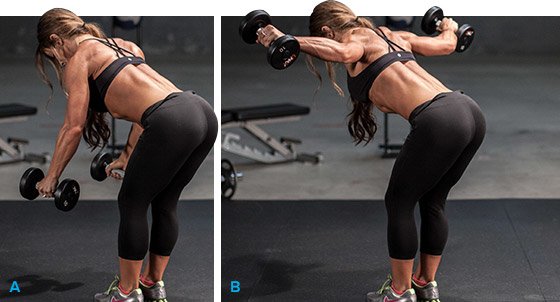
Bent-Over Rear-Delt Dumbbell Raise
10. Don't Extend Your Elbows During Single-Joint Raises
What makes single-joint movements better isolation exercises is that the elbows are locked in a slightly bent arm position throughout the movement. Once you start closing and opening up at the elbows, the triceps are now part of the equation, reducing the effectiveness of the isolation you're trying to achieve. On movements like lateral raises and reverse standing cable flyes, many lifters mistakenly extend their elbows to 180 degrees at the end of the movement, then close them to about 90 degrees as they lower the weights. Using weights that are too heavy is often the culprit. Either way, most lifters unknowingly make this mistake, so having someone with a sharp pair of eyes watching your technique on occasion can save you from losing the benefits of an exercise to bad form.
11. Make Sure Your Delt Heads Get Worked Equally
Nowhere is asymmetrical development more apparent—and critical—than with the shoulders. Typically guys who focus on building a big chest may have overdeveloped anterior deltoids (which contribute in all chest-pressing motions), while the middle head is taxed most heavily in overhead shoulder-pressing motions. If you've neglected back training, your rear delts are probably small in comparison. This is not only apparent in the mirror but sets you up for possible rotator-cuff complications down the road.
When it comes to the single-joint exercises, if you've got a lagging area, do the move for that area first (after your presses) when your energy levels are higher. Or consider doing a second single-joint movement for it. If your delts are fairly evenly developed, you can rotate the order in which you train them from one workout to the next to ensure balanced development. If you always do one area last in your workout, over time if will begin to lag behind the others.
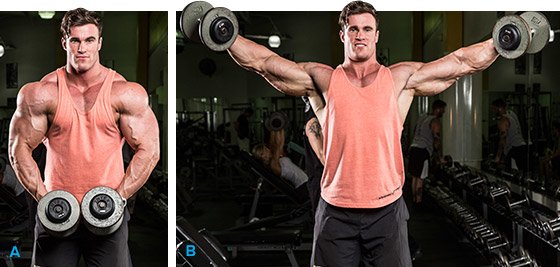
Side Lateral Raise
12. The Rotator Cuffs Need Lovin', Too
Everybody wants big shoulders but nobody wants to train the rotator cuffs. And why should they—you can't even see them! Well, the rotators (a group of four strap muscles) help stabilize the shoulder joint. When you train the delts (and chest for that matter) but skip your rotators, the ratio of the strength between the two muscle groups can become out of balance. This increases your risk of a damaging rotator-cuff injury. We know that training to avoid injury isn't sexy, but doing internal and external rotation exercises is important for healthy rotator cuffs, especially for longtime lifters.
13. Watch Out For The Warning Signs Of Shoulder Pain
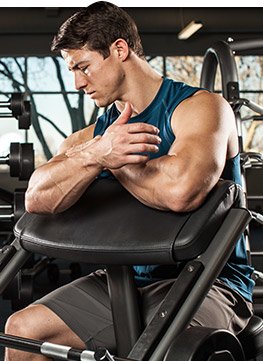
Like death and taxes, shoulder pain is almost an inevitability for longtime lifters who do repetitive motions. Depending on the severity of shoulder pain, consider trying an exercise with a different kind of equipment. For example, using dumbbells instead of a barbell on shoulder presses allows the shoulders to work in a more natural, possibly pain-free, range of motion.
Persistent pain could be trouble, ranging from anything such as inflammation to impingement and tendinitis to rotator-cuff damage. Don't underestimate the damage such kinds of injuries can mean. Time off can help, as can NSAIDs (which treat inflammation but not necessarily the cause), and ice. Better to learn rotator-cuff exercises yourself than from a physical therapist.
14. Don't Shrug Off Shrugs
Many bodybuilders add shrugs on the end of their shoulder workout, and for good reason: The upper trapezius gets a heavy dose of work on overhead-pressing and lateral-raise movements. Hence, for most people, completing the work by adding single-joint shrugs seems like an obvious place to work the upper traps. Note, however, that the middle and lower portions of the trapezius don't get that degree of activation, and those areas are better trained on back day.
15. Build Variety Into Your Shoulder Training
As your body adapts to a training stimulus, it reaches a point of diminishing returns. At that point, the same effort no longer produces the same results; you're spinning your wheels. This often happens after 6-8 weeks on the same routine. Consider cycling your shoulder training, going from light to moderate to heavy, or substituting different movements into your routine that are alike but slightly different from the ones you normally do. Substitutions can work the muscle from slightly different angles, offering greater long-term growth potential.
16. Keep An Eye On Your Body-Part Split
How you set up your training split is an important consideration. If you're not training chest and/or triceps the same day as delts, do them at least two days before or after to better ensure none of them are being overworked. If you're training them on the same day, simply start with the largest muscle group (chest) and work your way down (shoulders, then triceps).
http://www.findglocal.com/ZA/Pretoria/1777653685868806/Keranfitness
#https://keranfitness.ueniweb.com
#https://keranfitness.blogspot.com
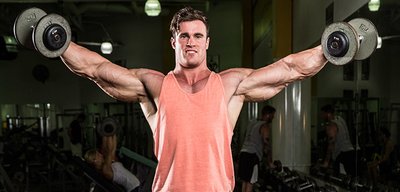
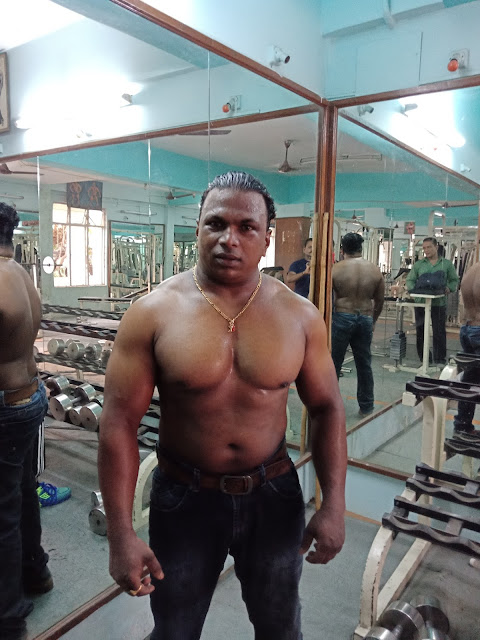
Comments
Post a Comment